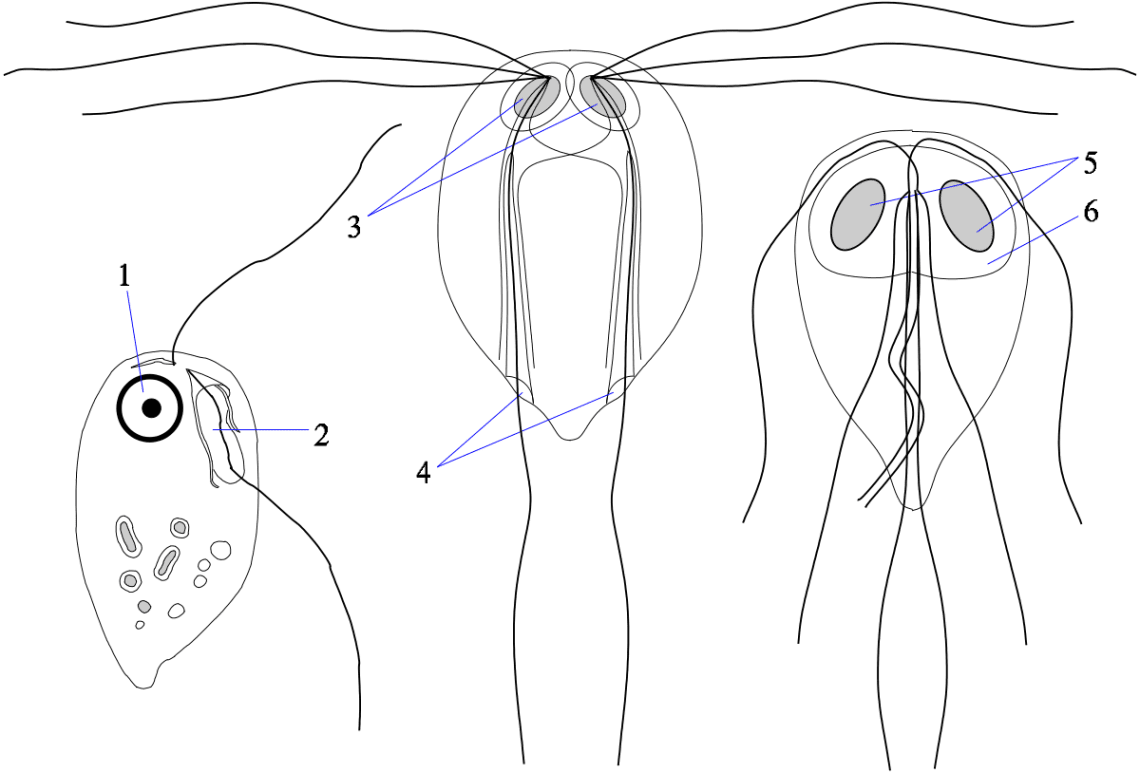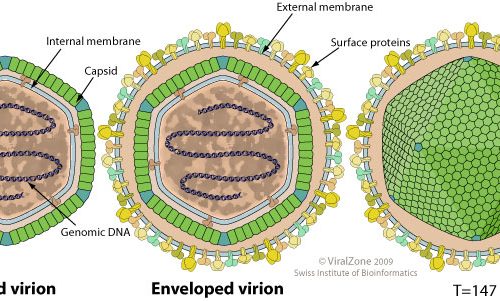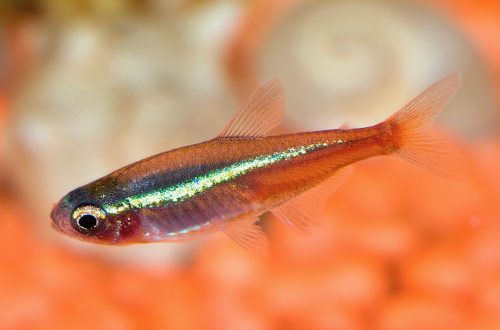
Hexamitosis (Hexamita)
Hexamitosis refers to diseases of the gastrointestinal tract with obvious external manifestations in the form of the formation of depressions, pits on the head and along the lateral line.
In English-speaking countries, this disease is known as Hole-in-the-head, which actually translates as “holes in the head.”
The disease is associated with microscopic flagellar parasites from the genus Hexamita, which gave the name to this disease, which settle in the intestines of fish. However, other parasitic flagellates from the genera Spironucleus sp., Protoopalina sp., Trichomonas sp., Cryptobia sp. may also be involved in the disease. and others.
According to studies, various types of cichlids (especially Angelfish and Discus) are most vulnerable to infection, while cyprinids, such as Goldfish, Danios, Barbs, are more resistant, and representatives of the Viviparous and Labyrinth fish groups are not at all susceptible to Hexamitosis.
Symptoms
In the initial stage, the disease is difficult to diagnose, since it occurs inside the body. During this period, the fish loses its appetite, becomes inactive, and loses weight. If there are many inhabitants in the aquarium, then it will be problematic to find such a large one.
In the later stages, external signs of the disease begin to appear. The pores on the head and body visibly enlarge, turning into pits (depressions), which can be filled with a whitish substance or mucus. The same substance often covers the gills, is excreted along with the feces. The exhaustion continues. Secondary bacterial and fungal infections develop in the affected areas.
In the case of cichlids, the disease is highly contagious. If one fish has symptoms, then others are also infected. In the absence of treatment, the death of weakened individuals occurs within 14–16 days.
Causes of the disease
At first glance, the reason is quite obvious – it is an infection with Hexamitidae parasites. However, this is not entirely true, since in most cases they are already present in the body of the fish in small quantities, being their natural companions and without causing any harm. Aquarium shrimps, snails and other aquatic organisms can also be carriers.
Thus, the manifestation of the disease and its severity does not depend on the fact of the presence of Hexamitidae, but on their number – the size of the colony.
It is believed that the rapid growth of a colony of parasites provokes a deterioration in the conditions of detention and, as a result, a weakening of the immune system. Therefore, the main reasons include the following:
- a significant deterioration in water quality, which refers to high concentrations of nitrogen cycle products and other contaminants, lack of oxygen;
- lack or deficiency in the daily diet of essential vitamins and minerals, i.e. low-quality monotonous feed that is not suitable in composition for feeding cichlids;
- stress, aggression and attacks from other aquarium neighbors.
Treatment
Based on the reasons, the first stage of treatment should be the creation of a favorable living environment. It will be necessary to clean the aquarium from organic waste, replace part of the water with fresh water, and prevent equipment. Bring the pH and dH values in line with the requirements of a particular species. Change food if necessary.
In the case of cichlids (the same Discus and Angelfish), the disease is easily diagnosed, so it is recommended to use special medications aimed at combating intestinal flagellates. Application according to instructions.
Medicines from Hexamitosis (Hexamita)
Azoo Pathogen Preventer – a universal remedy for pathogenic microorganisms, safe for the biological filter. Produced in liquid form, supplied in bottles of 120, 250, 500 ml.
Country of origin — Taiwan
API General Cure – a universal remedy for pathogenic microorganisms, safe for the biological filter. It is produced in the form of a soluble powder, supplied in boxes of 10 bags, or in a large jar of 850 gr.
Country of manufacture – USA
JBL Spirohexol Plus – a narrowly targeted remedy against intestinal flagellates of the genus Hexamita. Produced in liquid form, supplied in a bottle of 250 ml
Country of origin – Germany
AQUAYER Hexametril – a narrowly targeted agent against intestinal flagellates, safe for biological filtration. Available in powder form, sufficient to prepare a solution for an aquarium up to 700 liters.
Country of origin – Ukraine
Tetra ZMF HEXA-ex – a narrowly targeted remedy against intestinal flagellates. Produced in the form of tablets, packed in 6 pieces per pack, and in liquid form in 20 ml vials.
Country of manufacture – Sweden




